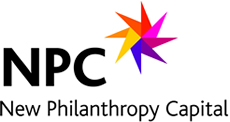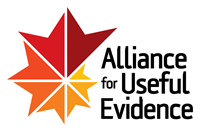Resources » Cause » Community
Event ReportsOpinion and Comment
Books and Guides
Since 2007, Social Ventures Australia (SVA) Consulting has completed over 400 projects with over 200 organisations across employment, education, community services, health and indigenous affairs. The SVA Consulting Quarterly brings together what they have learned from their work and the insights they have gained in new practices, novel methodologies and fresh wisdom.
This report by Lizzie Trotter, Jim Vine, Matt Leach and Daniel Fujiwara from HACT, produced in conjunction with Value Calculator, places robust values on the social impact of community investment activities. It includes values as well as practical guidance on how to apply them to achieve a basic assessment of social value using the Well-being Valuation approach.
This paper, by Daniel Fujiwara for HACT, sets out the methodology and analytical approach underlying the work on community investment and social value. The paper explains the Well-being Valuation approach, provides details of the datasets that the analysis draws on, describes the statistical method in technical detail, and introduces the broader theory behind social impact.
The CES Resource Guide: Evaluating outcomes and impact from the Charities Evaluation Services contains over 130 online and published guides, tools, discussion papers and fact sheets on all aspects of evaluation. It is designed as an interactive guide, and is a great go to resource for anyone involved with monitoring and evaluation.
The free guide contains the following dedicated sections:
- General guides and introductions to evaluation
- Assessing outcomes and impact
- Evaluation approaches and methods
- Sub-sector specific guidance
- Creative tools for engaging a range of stakeholders in monitoring and evaluation
- Useful websites
New statutory guidance on the Best Value Duty from the Department for Communities and Local Government sets out some reasonable expectations of the way authorities should work with voluntary and community groups and small businesses when facing difficult funding decisions. It falls under the policy of “Making local councils more transparent and accountable to local people”.
Case Studies
To provide a model of IRIS adoption by impact investors, the KL Felicitas (KLF) Foundation and the Global Impact Investing Network jointly released this case study which explains KLF’s motivation for IRIS adoption and details the Foundation’s application of IRIS across its active investment portfolio.
Event Reports
On March 26, 2003, The Goldman Sachs Foundation and The Rockefeller Foundation hosted over fifty funders at Goldman Sachs offices in New York to discuss the issues surrounding assessing social impact and social return on investment (“SROI”). We were pleased with the high level of interest in this topic and the insights articulated during the day’s discussions. Our focus was on two thematic fields: education/youth development and community development/employment.
The purpose of the meeting was twofold:
- To convene a cross-section of charitable and double bottom line funders to discuss and learn from various approaches to assessing social impact and social return on investment in both the nonprofit and for-profit sectors
- To begin a dialogue on developing a common set of expectations for metrics or standards that could be used in the education/youth development and community development/employment sectors to assess the social impact of philanthropic and other social purpose investments.
External Databases and Resources
More than 6400 publications have now been selected by TSRC for inclusion in the Third Sector Knowledge Portal - an easy-to-use online library of research, evidence, and analysis.
It has been developed by TSRC in partnership with the British Library and the Big Lottery Fund, and brings together over 6000 works such as: impact reports from third sector organisations; academic research projects; government studies; and more, in one collection of downloads, links and summaries.
Participatory Methods provides resources to generate ideas and action for inclusive development and social change. It explains what participatory methods are, where and how they are used, and their problems and potentials. It focuses on participatory approaches to programme design, monitoring and evaluation; to learning, research and communication in organisations, networks and communities; and to citizen engagement in political processes.
In 1996, the Center for the Study and Prevention of Violence (CSPV), at the Institute of Behavioral Science, University of Colorado Boulder, designed and launched a national youth prevention initiative to identify and replicate violence, delinquency and drug prevention programs that have been demonstrated as effective. The Blueprints for Healthy Youth Development project identifies prevention and intervention programs that meet a strict scientific standard of program effectiveness.
Impact Reports
UP Global is a non-profit dedicated to fostering entrepreneurship, grassroots leadership, and strong communities.
This report by Joëlle Bradly for Leicestershire County Council uses the Social Return on Investment (SROI) methodology to explore the value of the Community Safer Sex Project (CSSP) in terms of who is affected by the project and what changes for them. The Community Safer Sex Project (CSSP) was established in 2001 to support the emerging Teenage Pregnancy Strategy. This SROI evaluation of CSSP found that for each £1 invested in CSSP supporting Connexions Leicester Shire to deliver sexual health services between approximately £7 and £9 is returned in social value. Through measuring and valuing the social and economic benefits of CSSP, the following outcomes were found to create the largest value:
- Reduction in teenage pregnancies for young people
- Young people make more informed proactive choices
- Reduced cost to public services of a teenage pregnancy
- Better support for young people taking risks reduces the cost of disengaged young people
- Improved access to emotional support for young people
Calvert Foundation’s 2013 Social Impact Report explores the impact that investors, funders, supporters, portfolio partners, and advisors have empowered them to create in 2012. Calvert Foundation works at the nexus of communities and capital, meaning their impact is both the outcomes of our lending - affordable housing units built, jobs created, etc. - and the ways that they enable people to invest in the causes that inspire them.
This is a summary of the research report by Vanessa Wilkes and Professor David Mullins from Third Sector Research Centre at the University of Birmingham was commissioned by HACT. It provides an up-to-date picture of the measurement tools being used by housing organisations to measure the social impact of community investment activities, showing wide variation in the approaches used.
While there is general recognition of the importance of measuring impact, there are also concerns about cost, approach and potential duplication. The report will enable more sharing of evidence about different approaches to impact measurement and what works in terms of community investment.
This research report by Vanessa Wilkes and Professor David Mullins from Third Sector Research Centre at the University of Birmingham was commissioned by HACT. It provides an up-to-date picture of the measurement tools being used by housing organisations to measure the social impact of community investment activities, showing wide variation in the approaches used.
While there is general recognition of the importance of measuring impact, there are also concerns about cost, approach and potential duplication. The report will enable more sharing of evidence about different approaches to impact measurement and what works in terms of community investment.
Citizens Advice aims to provide the advice people need for the problems they face and improve the policies and practices that affect people’s lives.
In this blog, Doug Taylor, CEO of United Way Australia, writes about Collective Impact and how he sees it as a useful guide in tackling a complex social problem for a population group in a local community.
The outcomes matrix is a tool to help social investment financial intermediaries (SIFI’s) and social sector organisations to plan, measure and learn about their social impact. It aims to develop common ground and language for social investment and impact assessment in the social sector. The outcomes and measures are not intended to be prescriptive or exhaustive but should provide a helpful starting point for organisations to consider their social impact.
Working Papers and Research
An Independent Research Report on the Practices, Impact and Implications of Inspiring Scotland’s First Five Years authored by Gates Scholar, Noah J. Isserman, at the University of Cambridge. This report examines, in depth, the practices and methods employed by Inspiring Scotland venture philanthropy fund and it is the result of four years of research.
The Impact Investor Project was established in 2012 as a two-year research partnership between InSight at Pacific Community Ventures, CASE at Duke University, and ImpactAssets. The goal was simple: supplant the guesswork and conjecture in impact investing with solid evidence of high performance and, in the process, expose the concrete practices of outstanding funds for use as the foundation for a more sophisticated and successful market.
Impact Investing 2.0 profiles twelve funds who work in vastly different sectors, from microfinance in India to sustainable property in the UK, and have accordingly pursued very different investment strategies and approaches to social impact.Their success across such a broad set of parameters offers many lessons for the industry and beyond.





